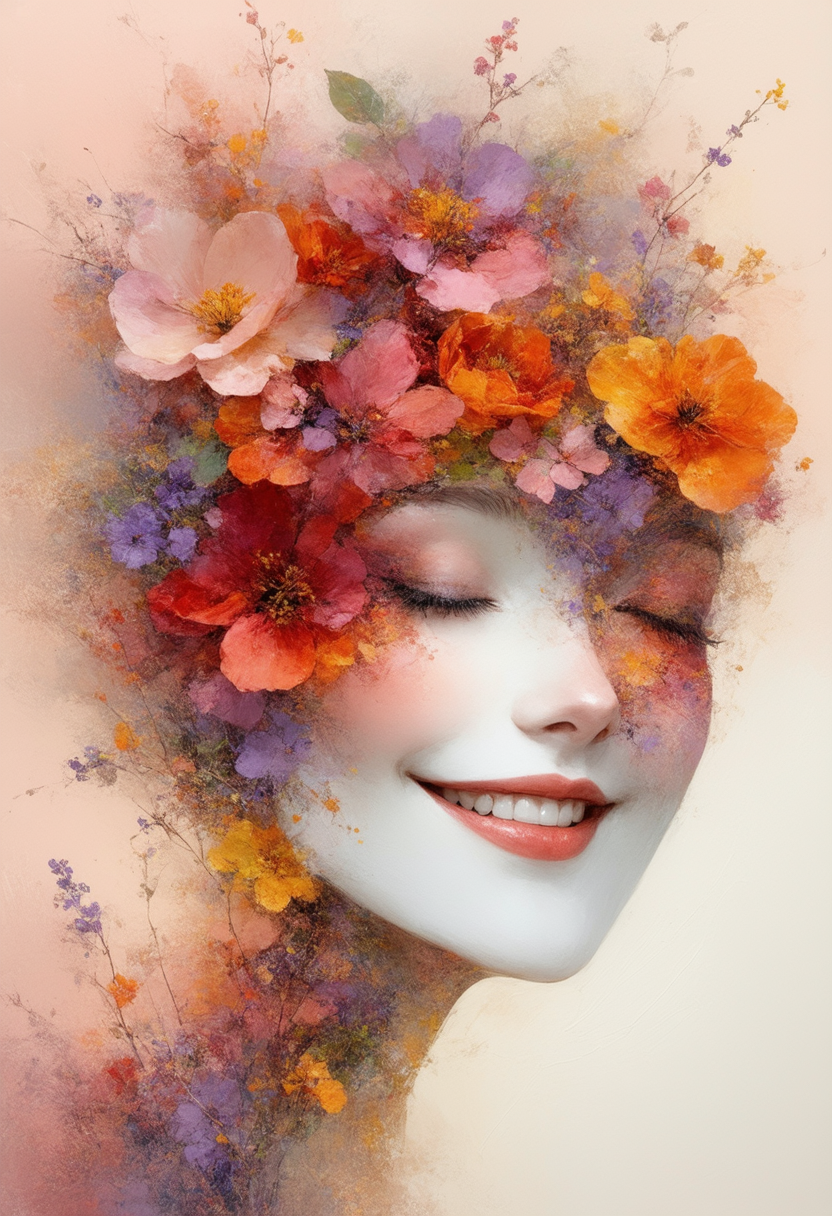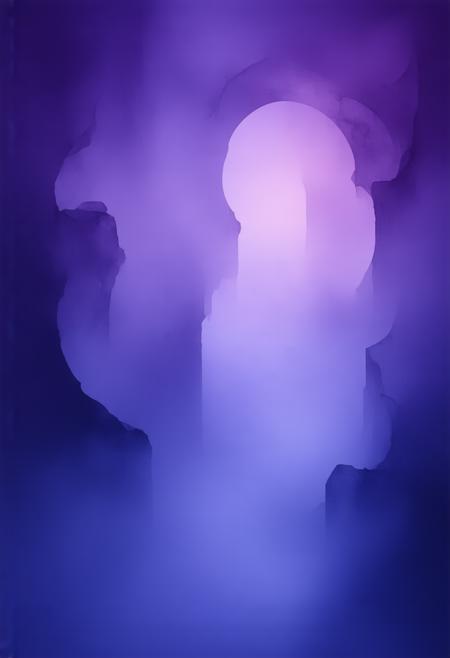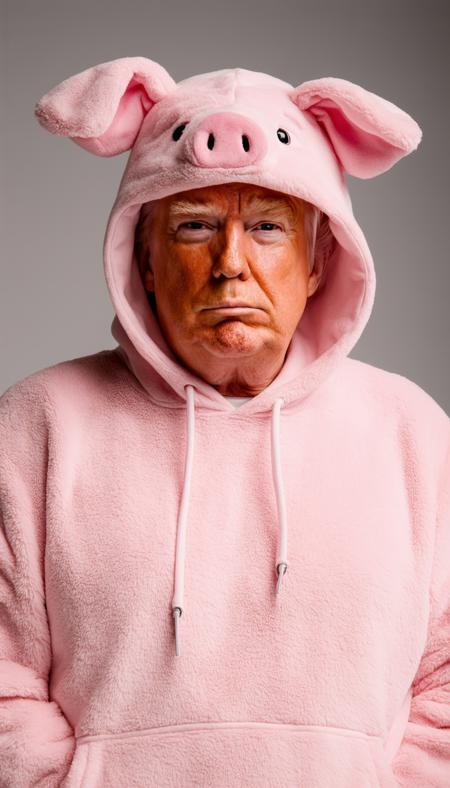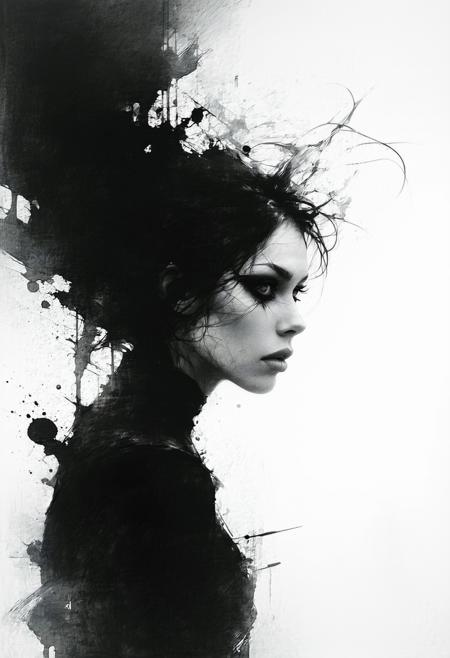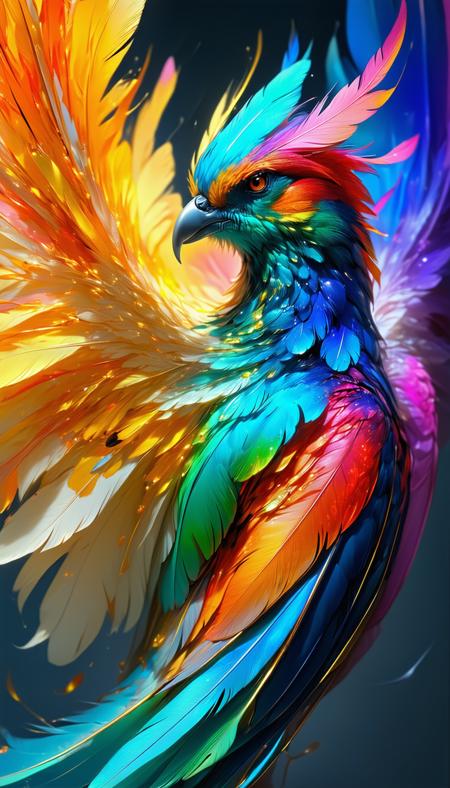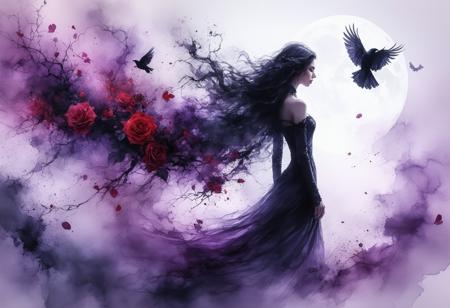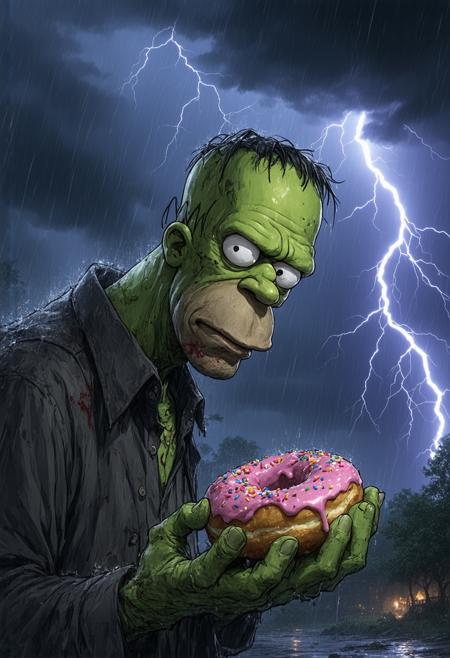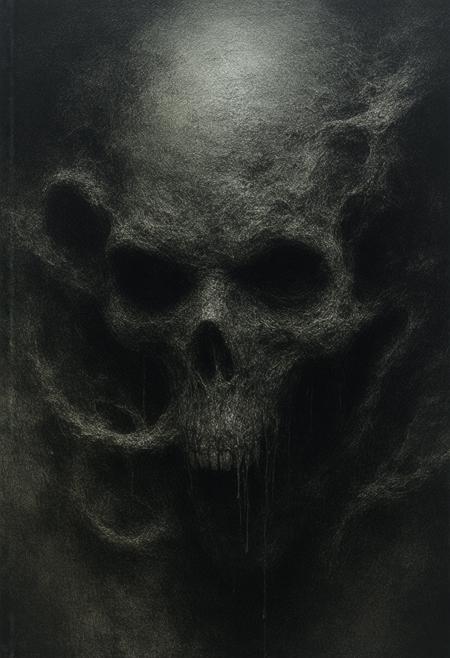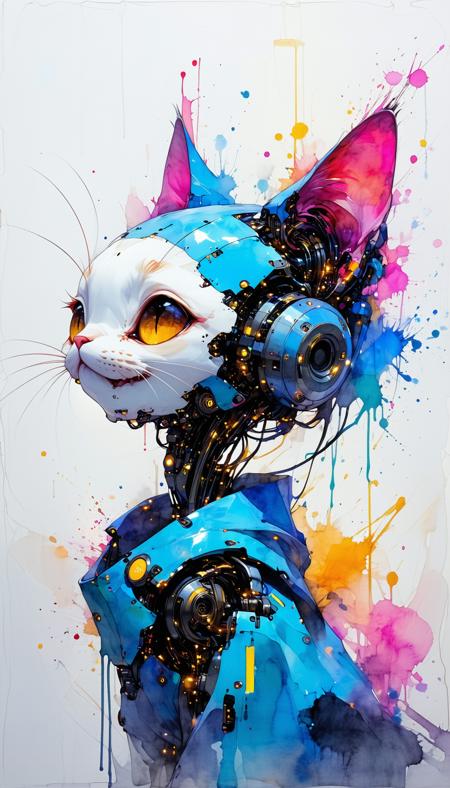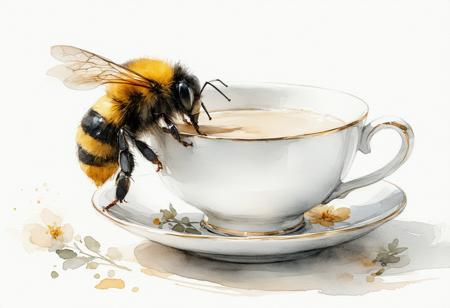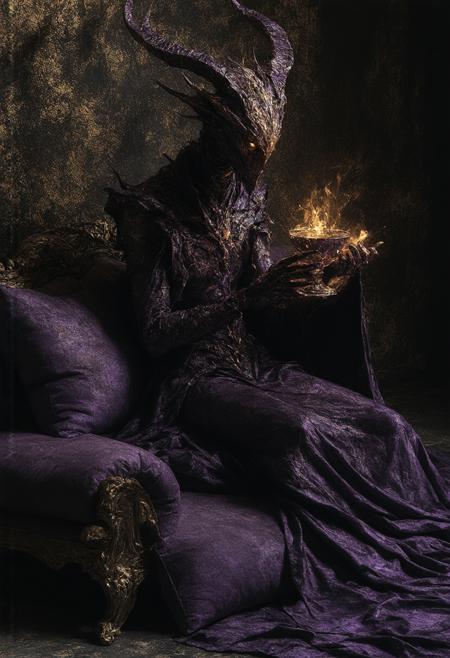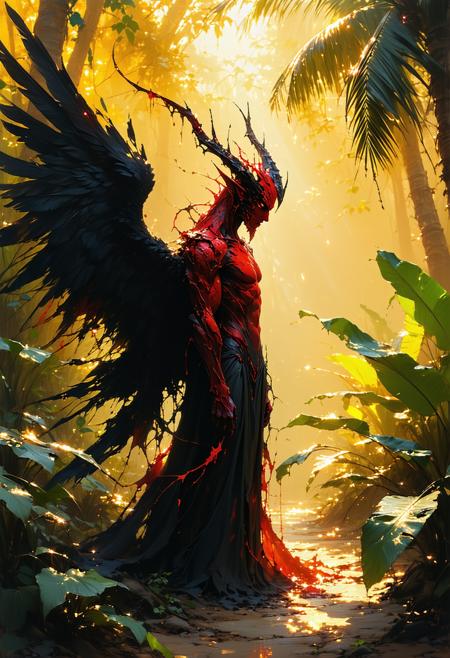A whimsical floral portrayal of a smiling face, where the features are crafted from an array of lush, colorful blooms. Petals, leaves, and stems flow together seamlessly to form the eyes, nose, mouth, and contours of the face, creating a sense of organic harmony. The flowers themselves radiate a joyful, vibrant energy, their hues ranging from rich reds and oranges to delicate pinks and lavenders. The overall composition is framed against a soft, pastel- toned background that allows the botanical elements to take center stage. Drawing inspiration from the botanical artworks of Cecilia Levy and Tessa Sutton, the scene conveys a sense of natural beauty, wonder, and gentle playfulness. The carefully curated arrangement of the floral features, combined with the harmonious color palette, evokes a feeling of unbridled happiness and a connection to the natural world
